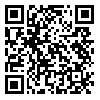BibTeX | RIS | EndNote | Medlars | ProCite | Reference Manager | RefWorks
Send citation to:
URL: http://jdisabilstud.org/article-1-3429-en.html
2- Associate Professor, Department of Women and Family Studies, Faculty of Social Sciences and Economics, AlZahra University, Tehran, Iran
3- Associate Professor, Department of Educational Management, South Tehran Branch, Islamic Azad University, Tehran, Iran
Abstract
Background & Objectives: Separation anxiety disorder is the most common diagnosis of anxiety disorders among children. Family cohesion is one of the dimensions of the family system theory, which can influence the level of children's anxiety and determines their behavior in the environment and how to face difficult events. On the other hand, attachment–related studies have shown that separation anxiety disorder is rooted in the quality of mother–child interaction. Secure mothers experience less parental stress, but mothers with an insecure attachment style are more stressed, and this affects the mother–child relationship. Even attachment is one of the essential factors in predicting a mother's behavior. For example, secure mothers are responsive and sensitive to children's needs, while insecure mothers, either ambivalent or avoidant, are less sensitive to children's needs. This research was conducted to investigate the pattern of structural relationships predicting separation anxiety symptoms of 5–8 years old children based on family cohesion with the mediation of mothers' sense of insecurity.
Methods: The research method was descriptive–analytical of structural equation modeling. The statistical population of the research comprised all mothers of 5–8 years old children suffering from separation anxiety disorder in four regions of north (referred to counseling centers of Zehne Pouya and Aramsh Novin), south (referred to counseling centers of Darya and Ehsas Zendegi), east (referred to counseling centers of Avayemehr and Rasha) and west (referred to counseling centers of Padideh and Pendarenik) of Tehran City, Iran, in 2021. Among them, 242 mothers were selected as a statistical sample based on the Tabachnick & Fidell formula (2007) through convenience sampling. The inclusion criteria for this study included mothers of 5– to 8–year–old children with separation anxiety disorder and being literate in reading and writing. The exclusion criterion was the failure to respond to the questionnaires used fully. The study questionnaires were distributed to all members of the statistical sample, and all were tested. To collect data, the Separation Anxiety Assessment Scale (parent version) (Hahn et al., 2003), the Family Cohesion Questionnaire (Samani, 2002), and the Revised Adult Attachment Scale (Collins & Read, 1990) were used. Data analysis was done using the Pearson correlation coefficient and structural equation modeling in SPSS & AMOS software version 22 at a significance level 0.05.
Results: The results showed that the direct path coefficient between family cohesion and child separation anxiety was negative and significant (p=0.004, β=–0.293), and the direct path coefficient between the mother's feeling of insecurity and child separation anxiety was positive and significant (p<0.001, β=0.448). The direct path coefficient between family cohesion and the mother's sense of insecurity was negative and significant (p<0.001, β=–0.514). Also, the indirect path coefficient results showed that the lower confidence interval limit for the mother's feeling of insecurity as a mediating variable between family cohesion and child separation anxiety was –0.319, and its upper limit was –0.142, which was statistically significant (p<0.001). The conceptual model fit indices were as follows: c2/df=2.21, GFI =0.957, NFI = 0.946, CFI = 0.970, and RMSEA=0.071.
Conclusion: Based on the findings of the research, children's separation anxiety symptoms can be predicted based on family cohesion with the mediation of mothers' sense of insecurity. Using the categories identified in this research can be a guide for experts in evaluating which categories of children with separation anxiety have more severe problems. As a result, it can help professionals formulate and implement appropriate interventions for the same category.
| Rights and permissions | |
 |
This work is licensed under a Creative Commons Attribution-NonCommercial 4.0 International License. |



